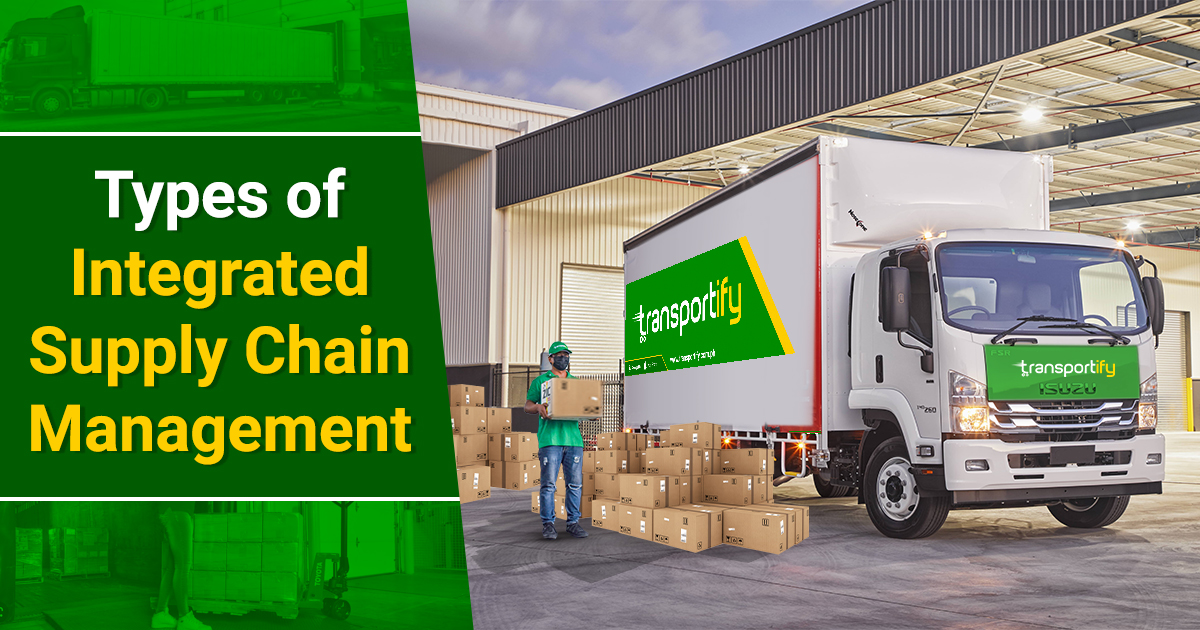
Integrating supply chain management can feel overwhelming for many business owners and managers. While understanding the inner workings of inventory, transportation, and storage is crucial for those in charge of supply chain management, it’s equally important to communicate and collaborate with other departments within the company. This process can be very intimidating for those new to integrated supply chain management. Furthermore, because it is so complicated, often people make costly mistakes that have significant repercussions.
Integrated supply chain management is a broad term that encompasses several different approaches and strategies. Let’s take a closer look.
What Is Integrated Supply Chain Management?
Integrated supply chain management is a comprehensive process involving coordinating activities across different organizational departments. This integrated approach to supply chain management aims to improve efficiency, reduce costs, and increase customer satisfaction.
The integrated supply chain strategies involve the collaboration between different departments in the organization, such as logistics, manufacturing, marketing, finance, procurement, and IT. Supply chain managers must integrate these functions to ensure the entire supply chain business flows smoothly. This helps organizations keep their products and services at optimal levels while reducing costs and maintaining customer loyalty.
Logistics technology solutions such as shipping management software, data analytics tools, and blockchain technology are used in integrated supply chain management to understand customer needs better. It also tracks inventory accurately and optimizes pricing per changes in demand or market conditions. In addition, by leveraging new technologies such as artificial intelligence (AI) and machine learning (ML), integrated supply chains can become more automated for greater efficiency.
Additionally, organizations must consider various factors, such as supplier selection criteria, sustainability goals, compliance standards, etc., when implementing integrated supply chain management strategies. Taking an integrated approach enables organizations to closely monitor their suppliers’ performance, manage risk through inventory diversification and identify any potential problems that could arise before they cause any trouble or disruptions.
Overall, integrated supply chain management is essential in helping businesses maintain an efficient flow of goods from production to delivery while optimizing operational costs for maximum profitability.
Horizontal Vs. Vertical Integrated Supply Chain Management: What’re The Differences?
When it comes to integrated supply chain management, there are two main types: horizontal and vertical. While both types have unique advantages and disadvantages, horizontal integrated chain management is often seen as more efficient and effective than vertical integrated chain management. So, let’s take a closer look at the differences between these two integrated supply chain management types.
Horizontal Integrated Supply Chain Management
Horizontal integration is a business strategy where entities that produce similar goods and services merge to increase production. The main advantage of this type of integration is increased market power with minimal loss from not being integrated. Horizontal integration contrasts with vertical integration, where a company manages its supply chain and value by owning the companies that provide its supplies, distribute its products, or sell to retail locations.
Vertical Integrated Supply Chain Management
A company practices vertical integration when it takes ownership of various parts of its production process rather than working with external contractors or suppliers. This allows the company to streamline its operations.
A company may grow vertically by acquiring or establishing its suppliers, manufacturers, distributors, or retail locations. However, this growth type may be risky due to potential disadvantages, including significant initial capital investment.
The Similarities of Horizontal and Vertical Integrated Supply Chain Management
Both horizontal and vertical integrated supply chain management have certain aspects in common that can benefit organizations. For instance, integrated supply chain management allows for better communication between the different parts of a company and improved visibility into the data and performance metrics. This helps businesses make more informed decisions and ensure they get the most out of their integrated supply chains.
Moreover, integrated supply chain management allows businesses to manage their inventory levels better. By accessing supplier and customer data, companies can quickly determine when to restock or deplete inventory based on customer demand. This helps to reduce costs associated with overstocking or understocking products and materials.
Integrated supply chain management also helps businesses streamline their operations, eliminating redundant tasks and processes such as duplicated paperwork or manual tracking of deliveries. In addition, with integrated supply chain management, companies can quickly get an accurate view of all their processes, making it easier to identify inefficiencies or areas for improvement. This helps them optimize their operations for greater efficiency and enhanced customer satisfaction.
In addition, integrated supply chain management allows organizations to better understand their customer’s needs and preferences, enabling them to develop more effective marketing strategies that will help drive sales and increase profits over time. By gathering customer data through integrated supply chains, businesses can craft more tailored offerings that meet the unique needs of each customer segment.
Lastly, integrated supply chains also enable businesses to anticipate future trends, stay ahead of the business logistics competition, and maintain a competitive edge in the market.
SEE ALSO:
- Bulk Delivery Services for Business: Get Ahead of the Competition
- Nationwide Trucking Services | How Can It Help Supply Chain Expansion?
- Shipping Management Software in the Philippines | Transportify
Make Your Supply Chain Logistics Process Easier by Using Transportify App
In conclusion, horizontal and vertical integrated supply chains have similarities and differences. Horizontal integration is characterized by a large firm controlling multiple steps in the supply chain. In contrast, vertical integration is characterized by one firm controlling all the steps from raw material production to final product delivery. Both models can effectively manage supply chains like in an agricultural supply chain, but their success depends on the business’s specific needs.
Horizontal integration is usually more cost-effective, while vertical integration allows for greater control and visibility of the supply chain. Each model has advantages and disadvantages, and it is important to carefully consider all options before choosing a supply chain strategy. Evaluating each model’s merits will help ensure an optimally integrated supply chain.
Make your supply chain logistics process more manageable using the Transportify app’s integrated logistics. You can outsource a wide range of transportation and logistics services that can be customized to fit your needs. We have a team of experienced professionals passionate about providing impeccable service.
 |
With our years of experience, we know how to make things run smoothly so you can focus on other aspects of your business. We provide integrated supply chain management services to help you maximize efficiency and profitability. Our integrated logistics system is designed to make it easy for you to track your shipments, manage inventory levels and monitor delivery times so you know exactly where each item is at any given time.
 | or |
Frequently Asked Questions:
What are the two types of integrated supply chain management?
🚚 There are two types of integrated supply chain management: horizontal and vertical. Horizontal integrated supply chain management is when different parts of a company work together to achieve a common goal. This type of integrated supply chain usually involves suppliers, manufacturers, distributors, and retailers. On the other hand, vertical integrated supply chain management is when all the parts of a company are interconnected, with the business having direct control over supplier and customer relationships. This integrated supply chain usually involves suppliers, manufacturers, and retailers.
What are the differences between horizontal and vertical integrated supply chain management?
🚚 The differences between horizontal and vertical integrated supply chain management strategies lie in the degree of control a business has over the production process. With vertical integrated supply chain management, companies have more direct control over suppliers and manufacturers, while in horizontal integrated supply chain management, the control is more indirect.




 INSTANT QUOTE
INSTANT QUOTE

 Chat
Chat